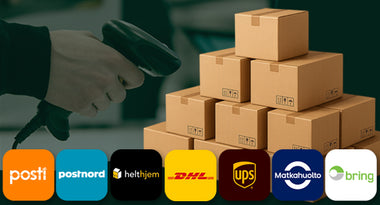1. Separate Pre-Orders from Daily Order Processing Flow
Pre-orders can create confusion in the fulfillment process if they are mixed in with regular, ready-to-ship orders. To avoid this, you should automatically filter pre-orders so they don’t interfere with your daily order fulfillment tasks. By clearly labeling pre-orders, you can ensure they are kept in a separate queue, ready to be processed only when the stock becomes available.
You can automate this process with Printrooster Order Printing by filtering the pre-orders to another order processing flow based on the product data that is in the order data. If an order contains products with "pre-order" tag, you can use this to exclude these orders from entering the normal order processing flow. You can also set up another flow to contain only pre-orders. This will hold pre-orders from being printed to your normal shipping and printing processes. This ensures that your warehouse team only focuses on in-stock items for daily shipments while pre-orders are managed in their own distinct workflow.
Key benefits: Reduced fulfillment confusion, streamlined processing for in-stock items, and clear separation of pre-order tasks.

Pre-Order Management Tags and Filters
Shopify’s powerful tagging and filtering system allows you to automatically flag pre-orders when they are placed. These tags make it easy to sort, review, and manage pre-orders separately from your daily orders. Use tags like “Pre-Order,” “Backordered,” or “Coming Soon” to keep your team informed and organized.
Key benefits: Easy identification of pre-orders, enhanced organization, and better communication with your team.
Automated Customer Notifications for Pre-Orders
When handling pre-orders, keeping customers informed is crucial. Shopify allows you to automate email notifications for pre-orders, informing customers when their order is expected to ship, and providing updates once the item is in stock. This helps manage customer expectations and reduces inquiries about order status.
Key benefits: Improved customer communication, reduced support inquiries, and higher customer satisfaction with pre-order experiences.
2. Print Pre-Orders When You Want to Fulfill Them
One of the challenges with pre-orders is deciding when to print the packing slips and shipping labels. Printing them too early could result in misplaced orders or delays in daily order processing, while printing them too late may slow down your ability to ship the products when stock arrives.
With Printrooster Order Printing, you can easily control when pre-orders are printed. Once the pre-ordered items are in stock, simply print the orders in batches from the automatically created filtering. This flexibility ensures that your pre-orders are fulfilled efficiently without cluttering your workflow until they’re ready to be processed. Shopify’s automated notifications can also alert you when pre-order inventory is available, prompting your team to begin fulfilling these orders.
Key benefits: Flexible control over when to fulfill pre-orders, streamlined printing process, and the ability to batch-print pre-orders when stock arrives.




